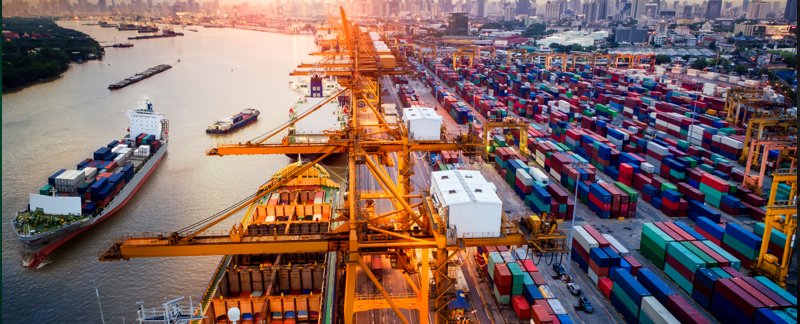
No Cheese, Please! Balancing Flexibility and Efficiency in Supply Chains
Don’t get me wrong, I love Thai food. But having spent the best part of a week sustaining on Tom Yum Goong and Gaeng Daeng, we were now knocking on a familiar threshold. We had reached that point in our vacation where the large yellow M towering over the tropical island could no longer be ignored. Hiding under the disguise of large conical sunhats and oversized Elton John-styled sunglasses, we covertly made our way through the rolling doors at McDonalds. “I’ll have the large Big Mac meal. No cheese, please!” A few minutes later, as I sit down to unwrap my serving, I catch a glimpse of orange oozing out of my burger. “That is unbelievable!” I exclaim, “they’ve served it with the fromage. Excuse my French, but that is outrageous!”
Is committing such a mistake, an operational one albeit, acceptable at a place as revered as McDonalds? The answer may surprise you: yes, it is. At Burger King, however, it would be a categorical “no”. Flexibility, such as that required to simultaneously flip two burgers – the first with and the second without cheese - is great when you are the customer. With maximum flexibility, you can personalize order specifications to match your specific taste. You also get to schedule a delivery time and place of your choosing and do away with minimum order quantities. If you are the supplier, however, this same flexibility will complicate matters. It requires redundancies in time, capacity and material, all of which increase your cost structure and constrain your ability to run your mill at higher levels of efficiency. Where customers love flexibility, suppliers dread it.
“i'm lovin’ it” and “HAVE IT YOUR WAY” are two very recognizable slogans with very different approaches to letter casing. But the orthography doesn’t tell half the story. Upon closely examining a McDonalds paper wrapper, you discover the words “i’m lovin’ it” stare back in a multitude of languages. The slogan is arguably the very embodiment of efficiency. McDonalds does not want you to order your burger with no cheese, for that would complicate matters. They want you to order a Big Mac, full stop. They want you to love it as it is, and they want to hear you say the words. And if you don’t, there is a sizable risk that they get your order wrong (as they did with mine on that fateful summer day on the Thai atolls).
McDonalds geared their DNA for efficiency from the very beginning. In fact, co-founder Maurice McDonalds himself described their speedee service system as “a symphony of efficiency. Not a wasted motion.” Of course, this approach adds up to a whole lot of nonsense at the Burger King next door. What they took to town along with the famous Whopper is flexibility, as reflected in the mantra “HAVE IT YOUR WAY”. Burger King wants you to order your Whopper without cheese. They want you to ask for extra onions and ultra-thinly sliced tomatoes. And crucially, they will get your order right. Every time. It is their way of differentiating themselves from the competition, but it is also the reason why they are likely to end up with a higher cost structure.
Both efficiency and flexibility are fantastic supply chain attributes to have, but it is difficult to muster both simultaneously. Meet half-way? Strategists caution against the “hole-in-the-middle” approach, where you risk dropping the ball on both. From my experience, the best way to approach this is by weaving a supply chain strategy that maximizes performance on one of the two attributes while seeking to limit the resulting detrimental impact on the other. This approach yields two options. Option A, where your aim is to maximize flexibility as much as possible while maintaining 100% efficiency levels (McDonalds). Flexibility will be quite low, but that is a hit that you should be strategically willing to accept. Option B sees you do the opposite, namely maximizing efficiency as you sustain 100% flexibility (Burger King). There is no absolute answer as to which of the two strategies is the better one. Done right, either will yield results.
Aiming to maximize both efficiency and flexibility is likely to lead to failure. To illustrate why, let us examine two similarly conflicting supply chain traits: cost and quality. Consider whether it is more profitable to operate a high-end restaurant or a fast-food shack. Surely both can be profitable, but certain conditions must be met. The high-end joint requires that you deliver top-drawer quality at the best cost (not to be confused with the lowest cost). The shack, on the other hand, requires that you offer acceptable service (not to be confused with the best service) at the lowest possible cost. Attempting to deliver the best service on a shoe-string budget is unlikely to be sustainable.
The next time you are stranded on a tropical island and craving a Big Mac, stick to the cheese, please. Alternatively, locate your nearest Burger King. I know that’s what I’m doing.
Related Articles

PART 3: Supply Chains are Suffering from Long COVID. This is what they’ll recover to look like
Supply chains, too, have escaped with their lives, having contracted Long…

PART 2: Supply Chains are Suffering from Long COVID. Here’s the Vaccine
Global supply chains are still suffering from Long COVID two years after…

Supply Chains Are Suffering from “Long COVID”. Here’s Why and What to Expect Next
Two years after the onset of the COVID-19 pandemic, the world still reels…

Business in the Time of COVID-19
The cat is out of the bag. One way or another, the novel coronavirus outbreak…
